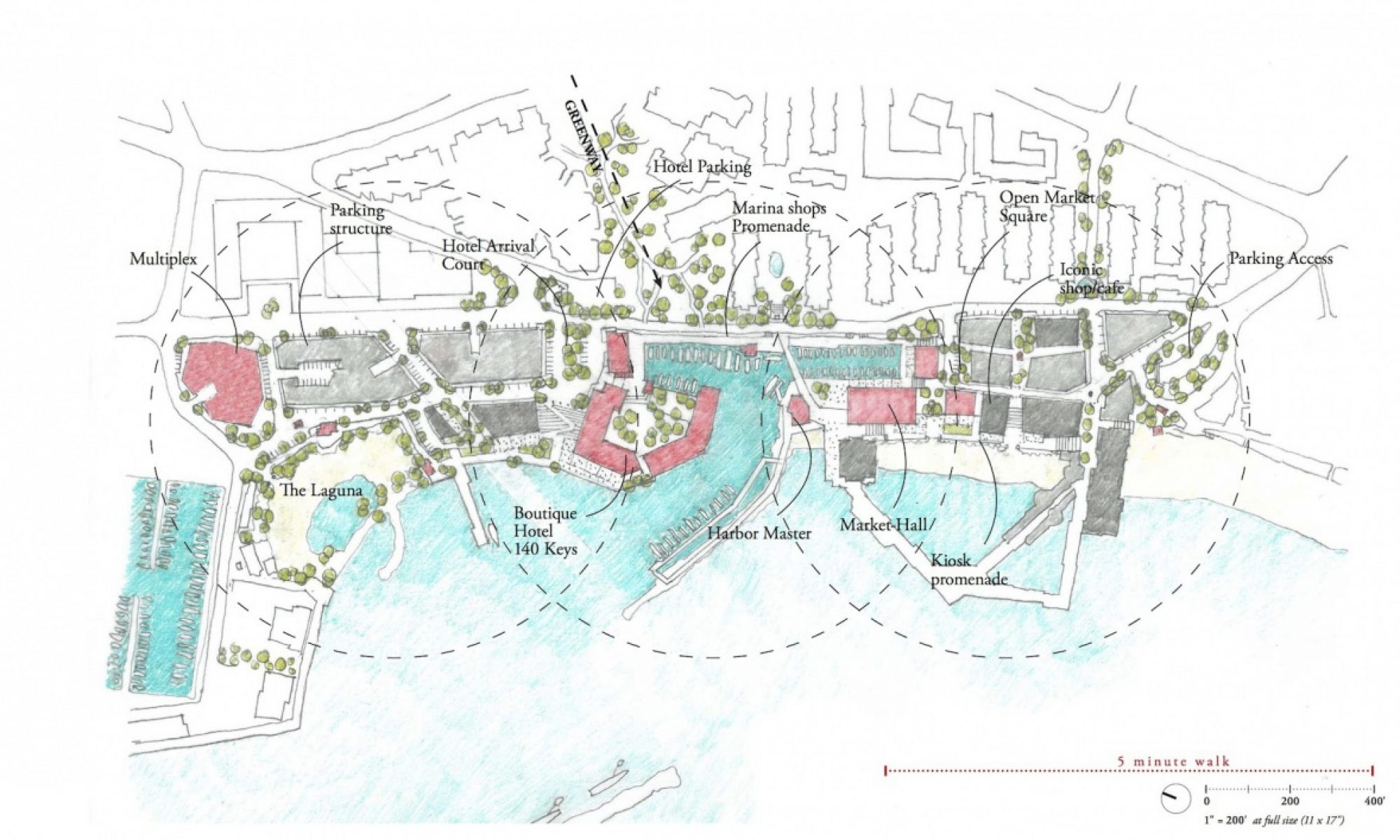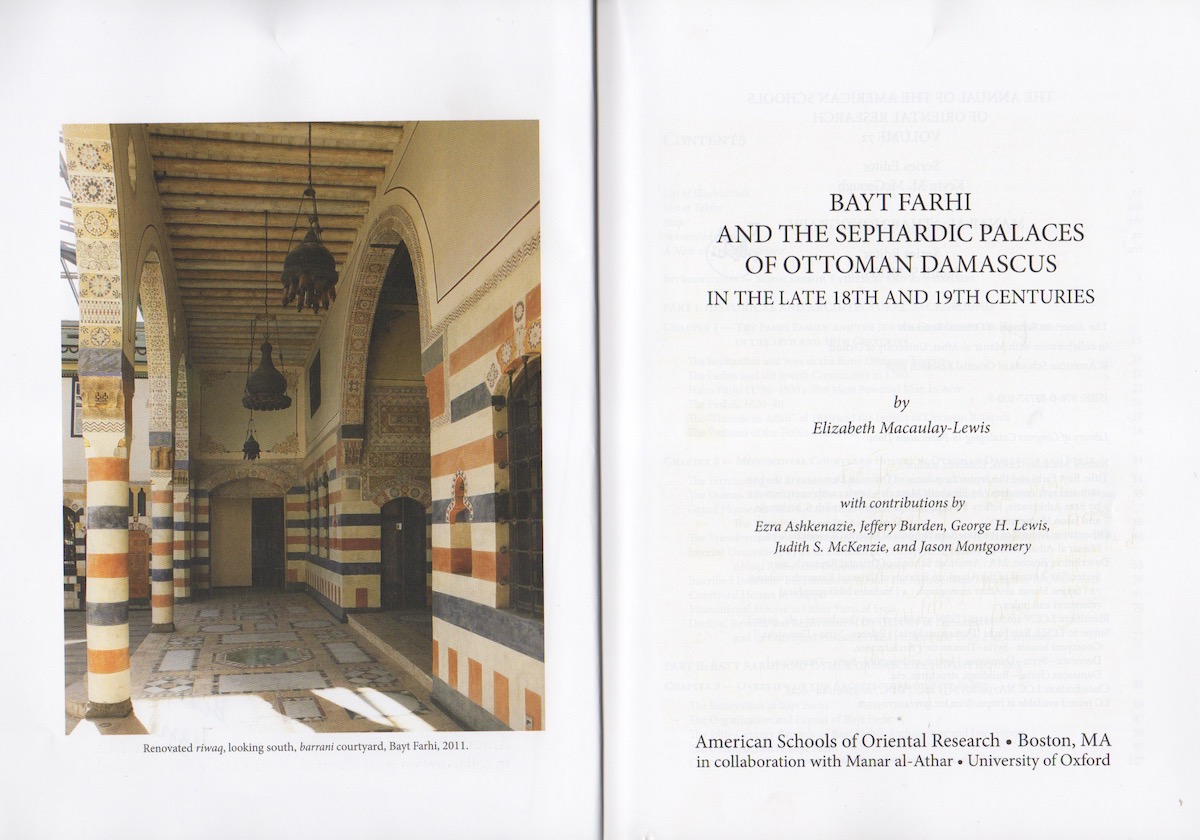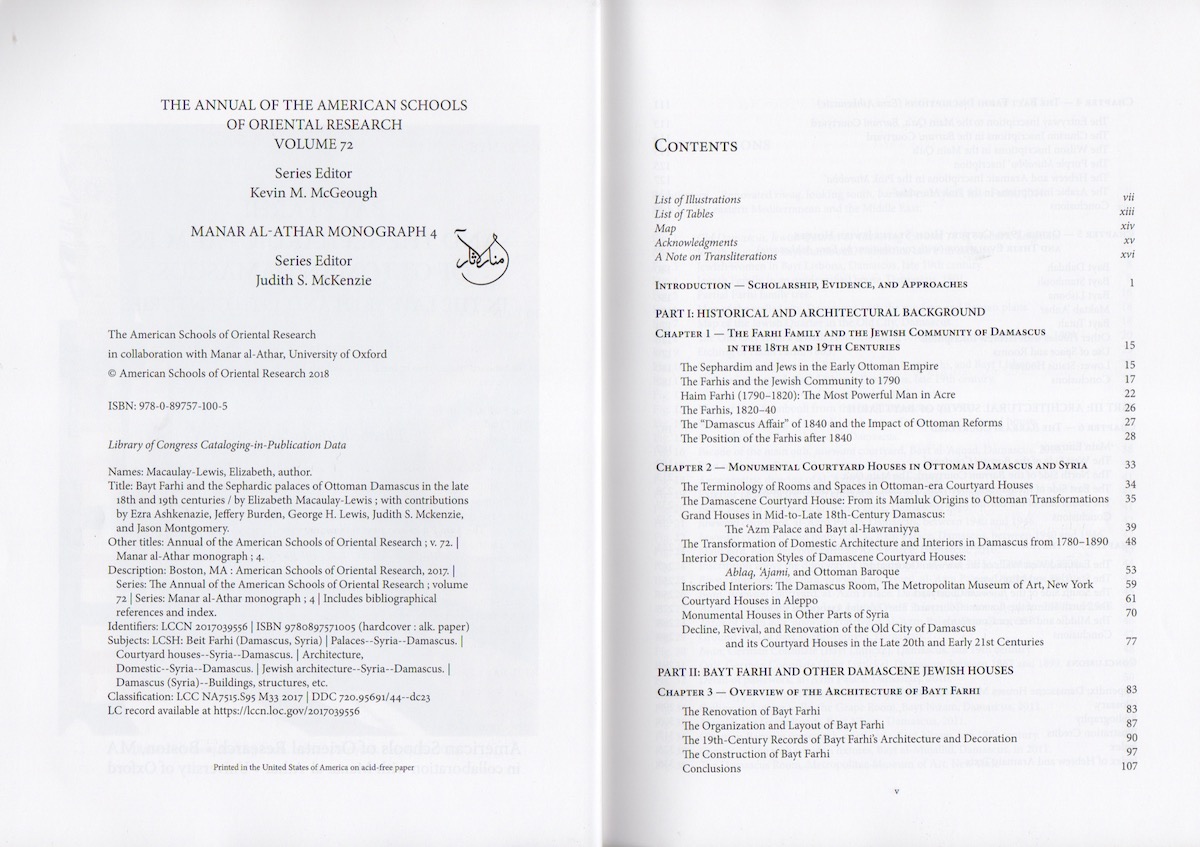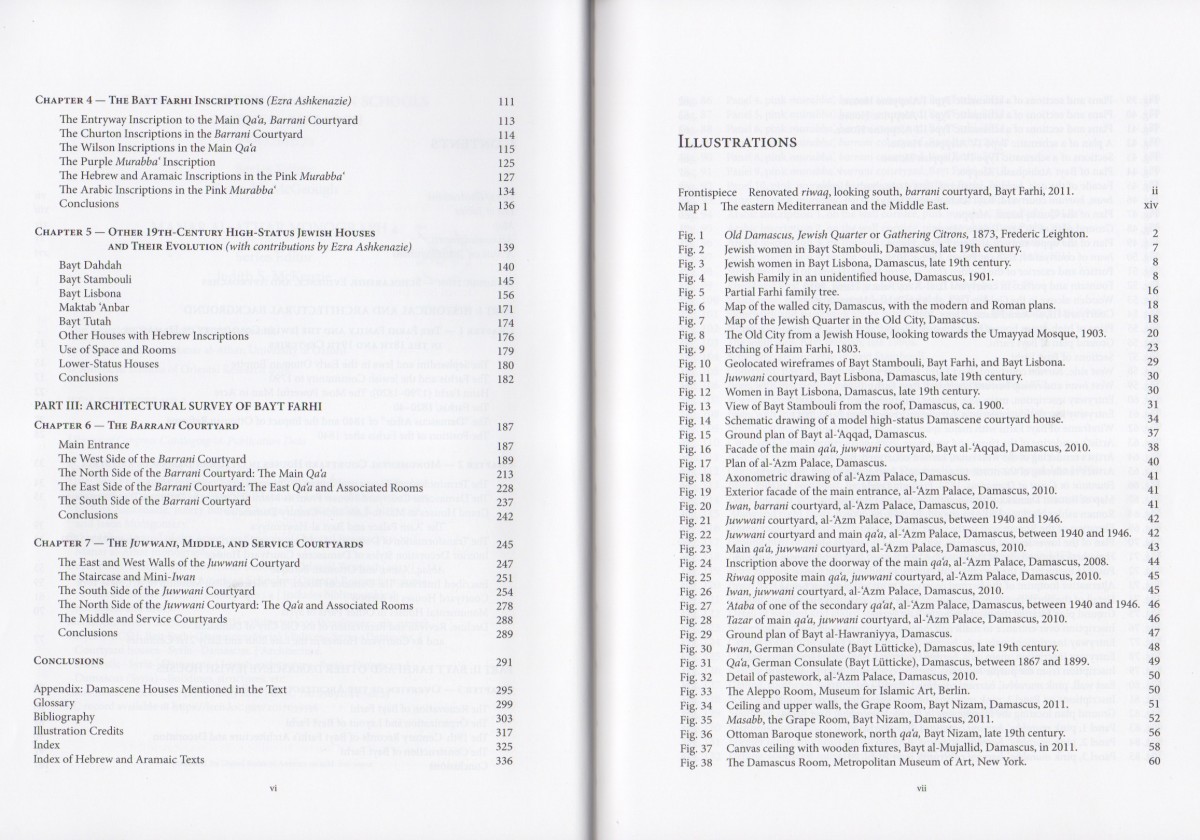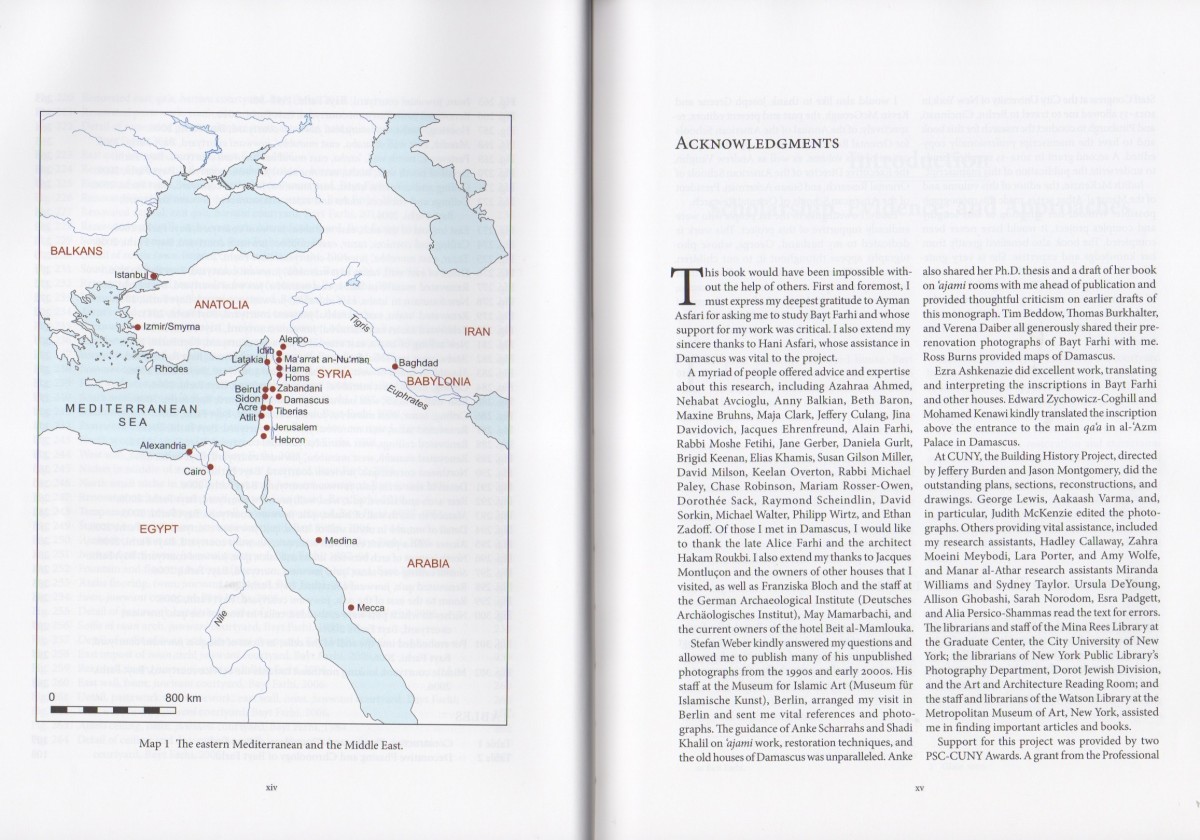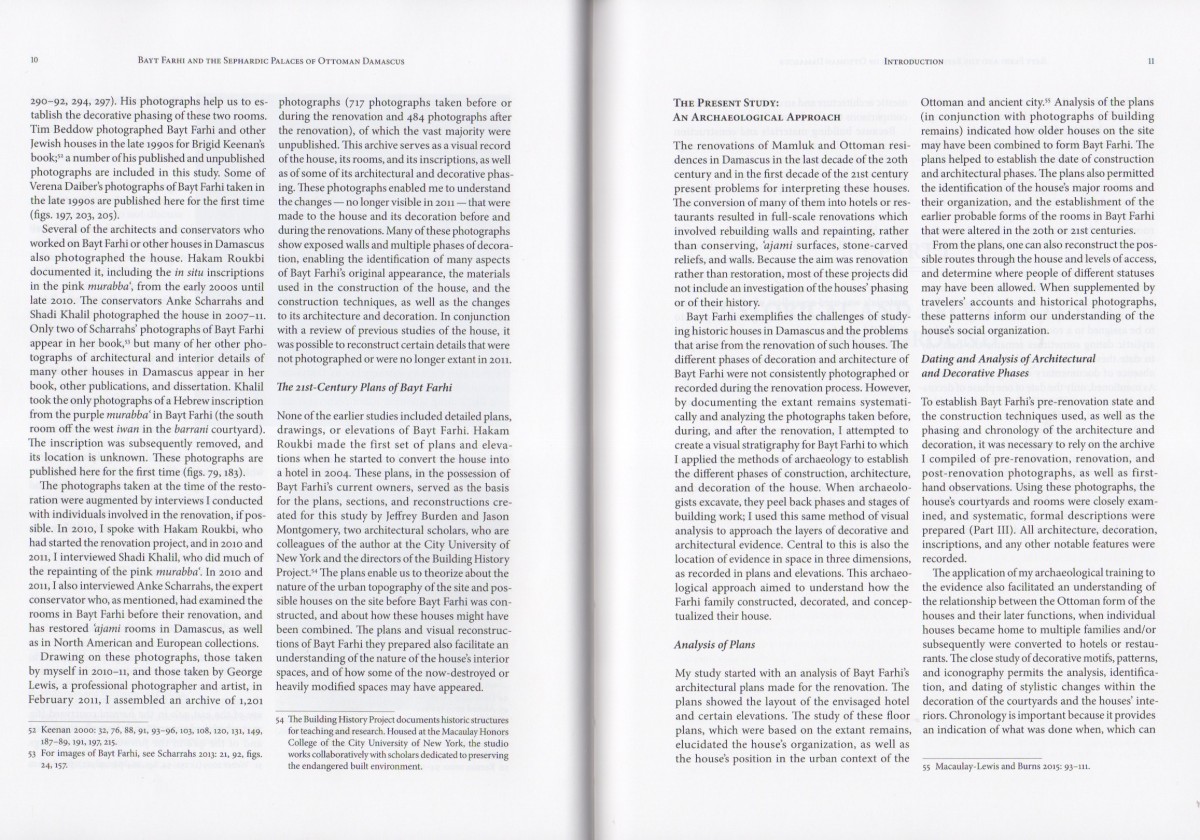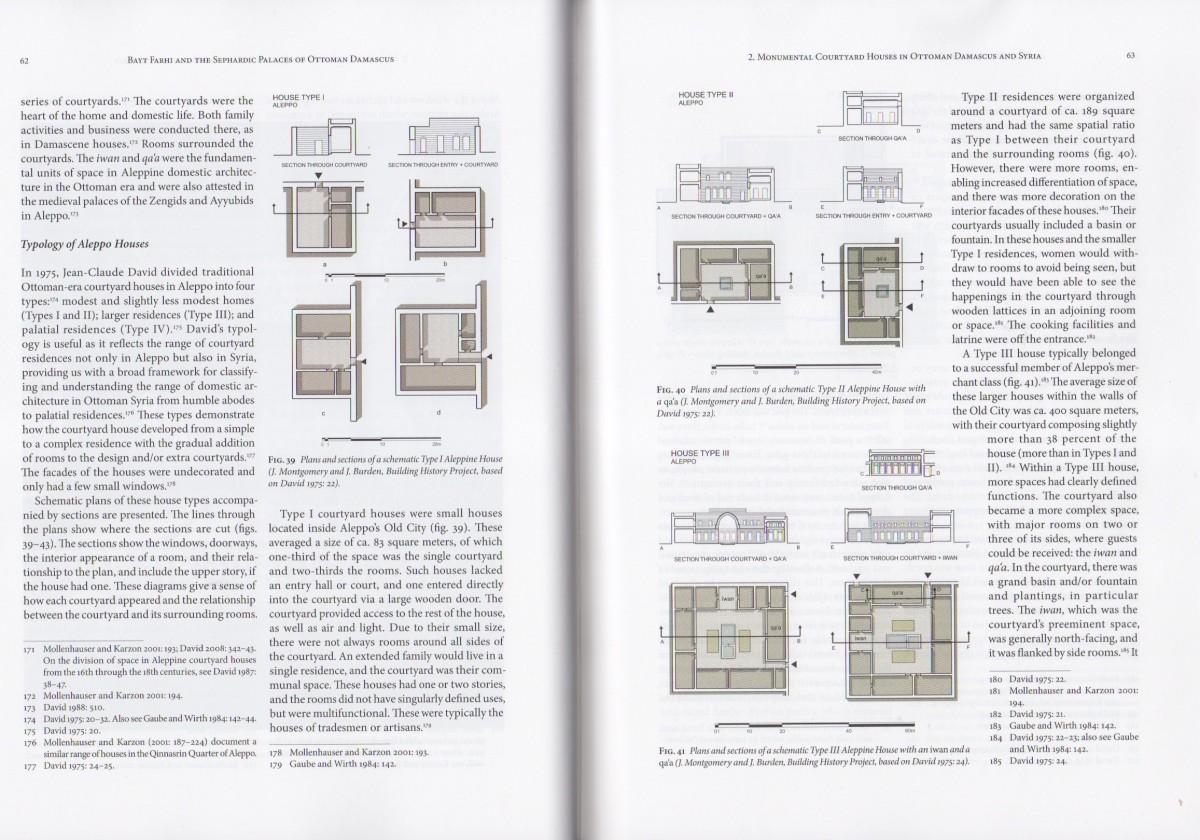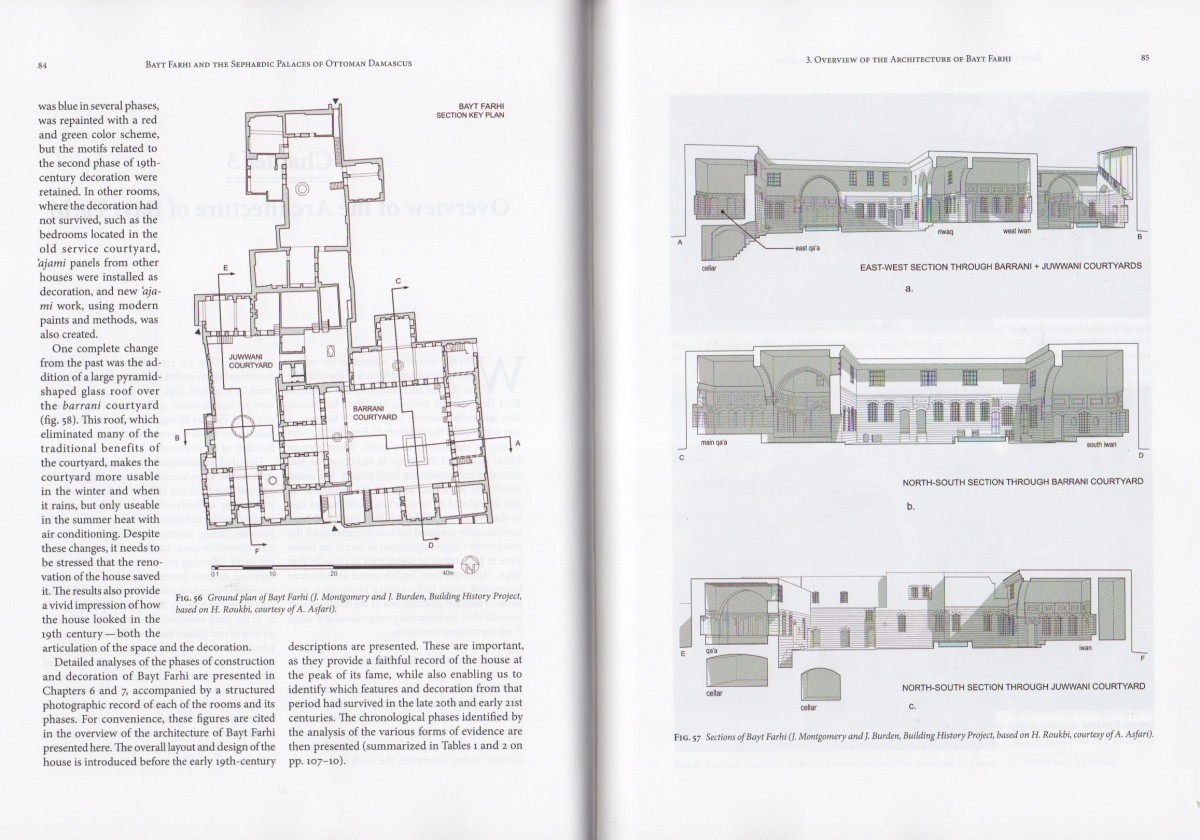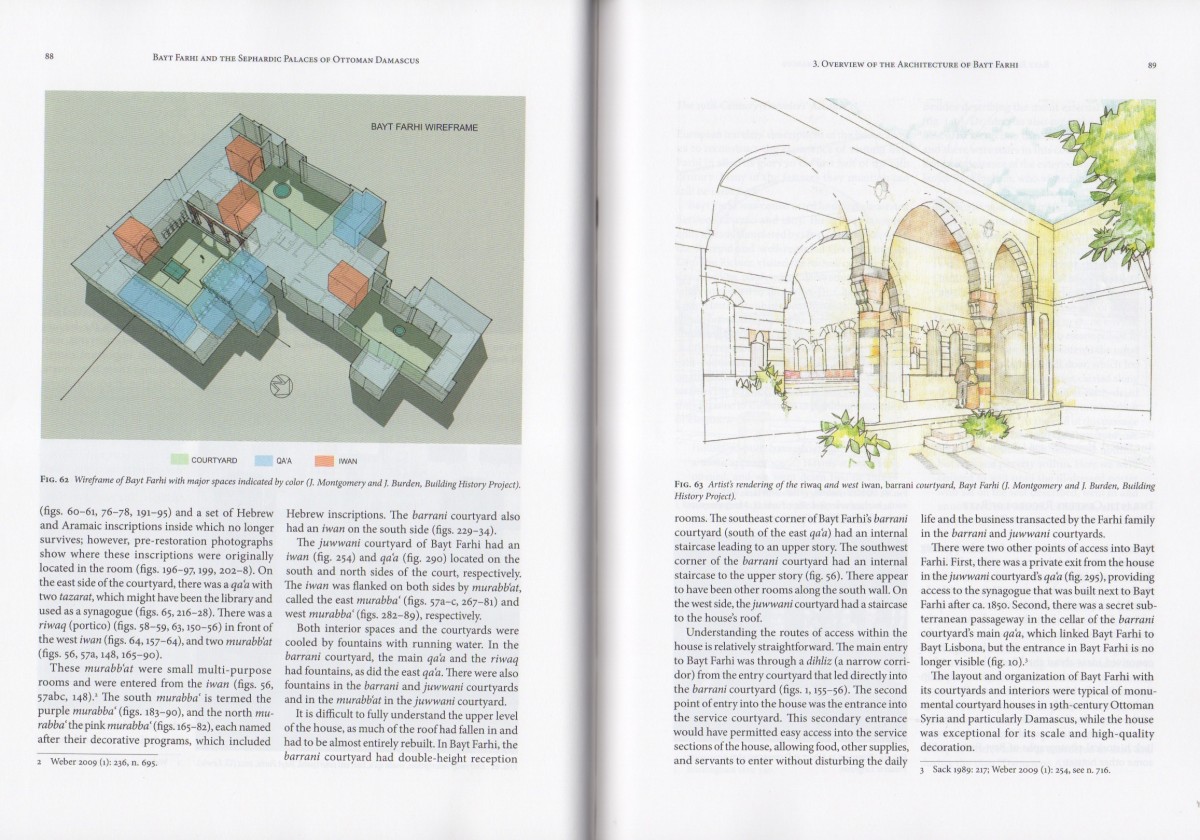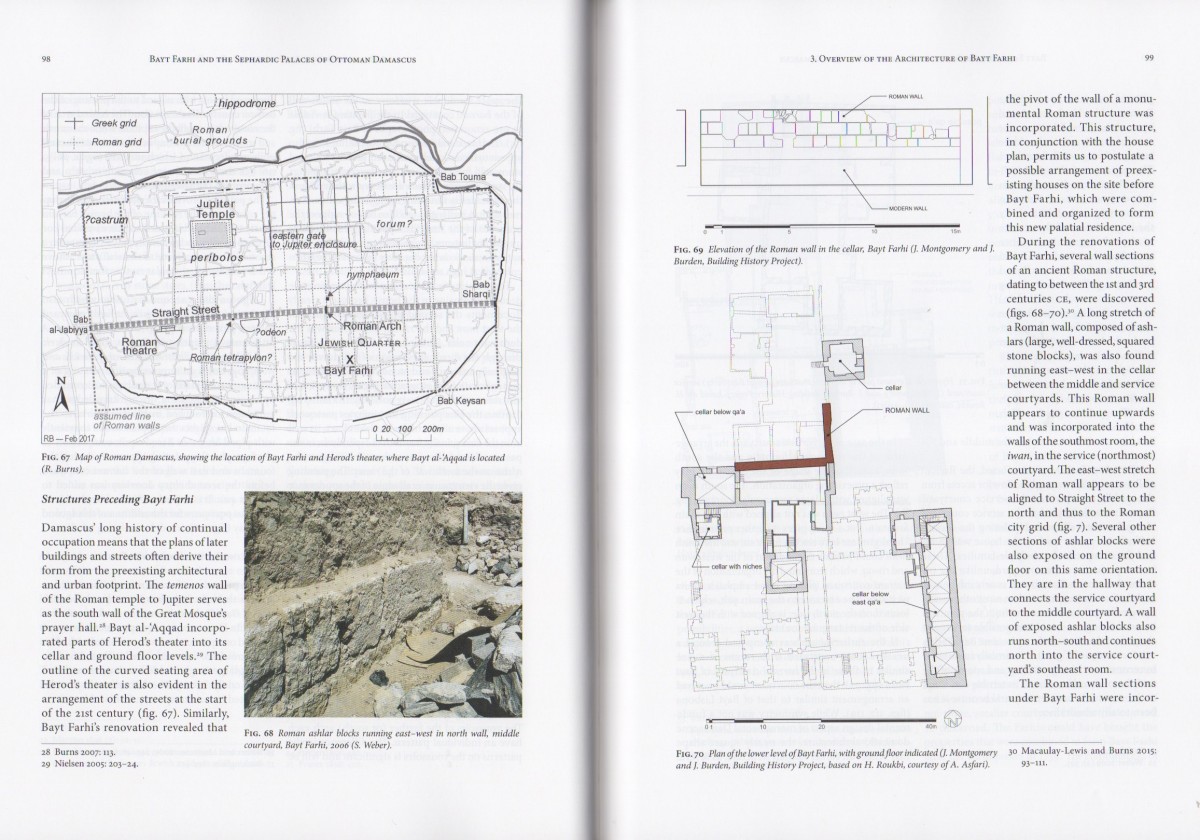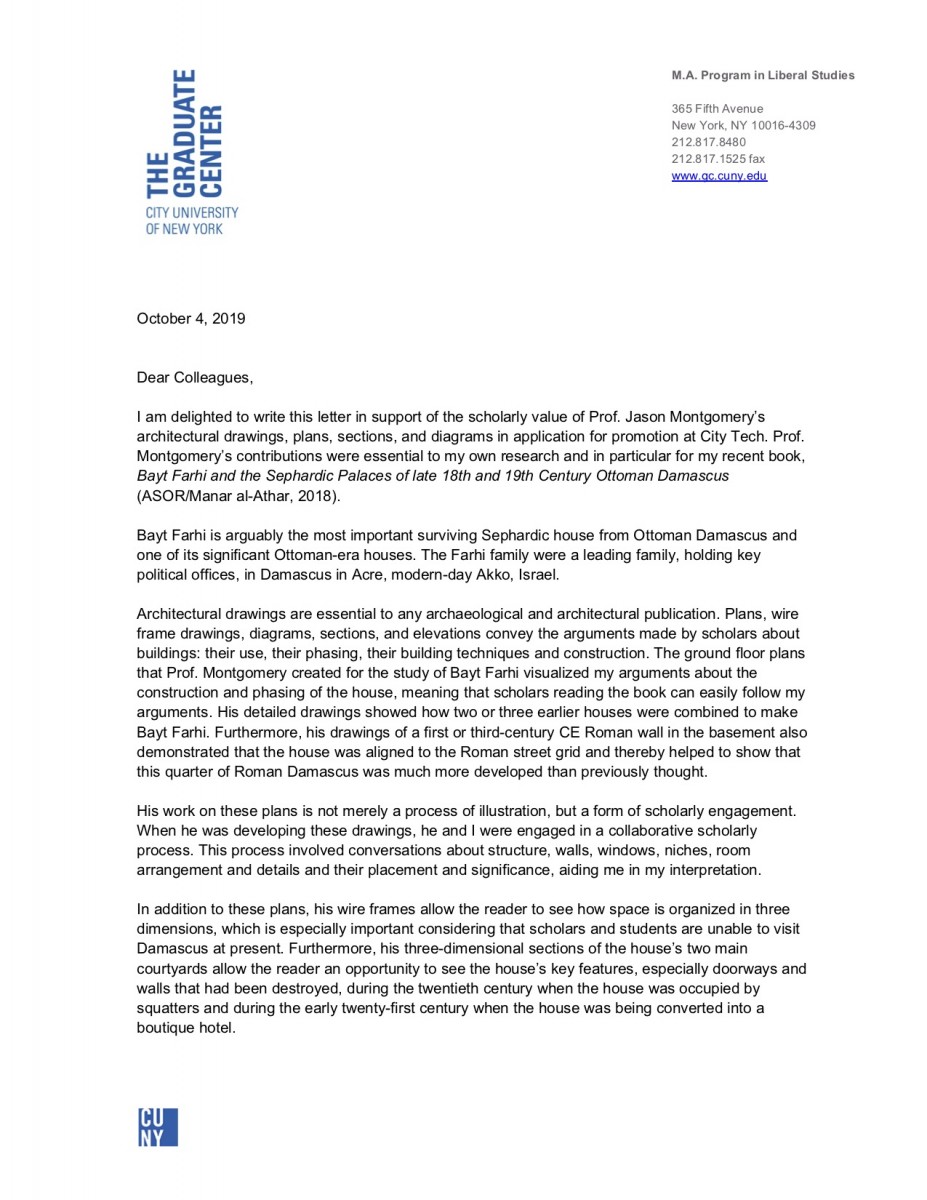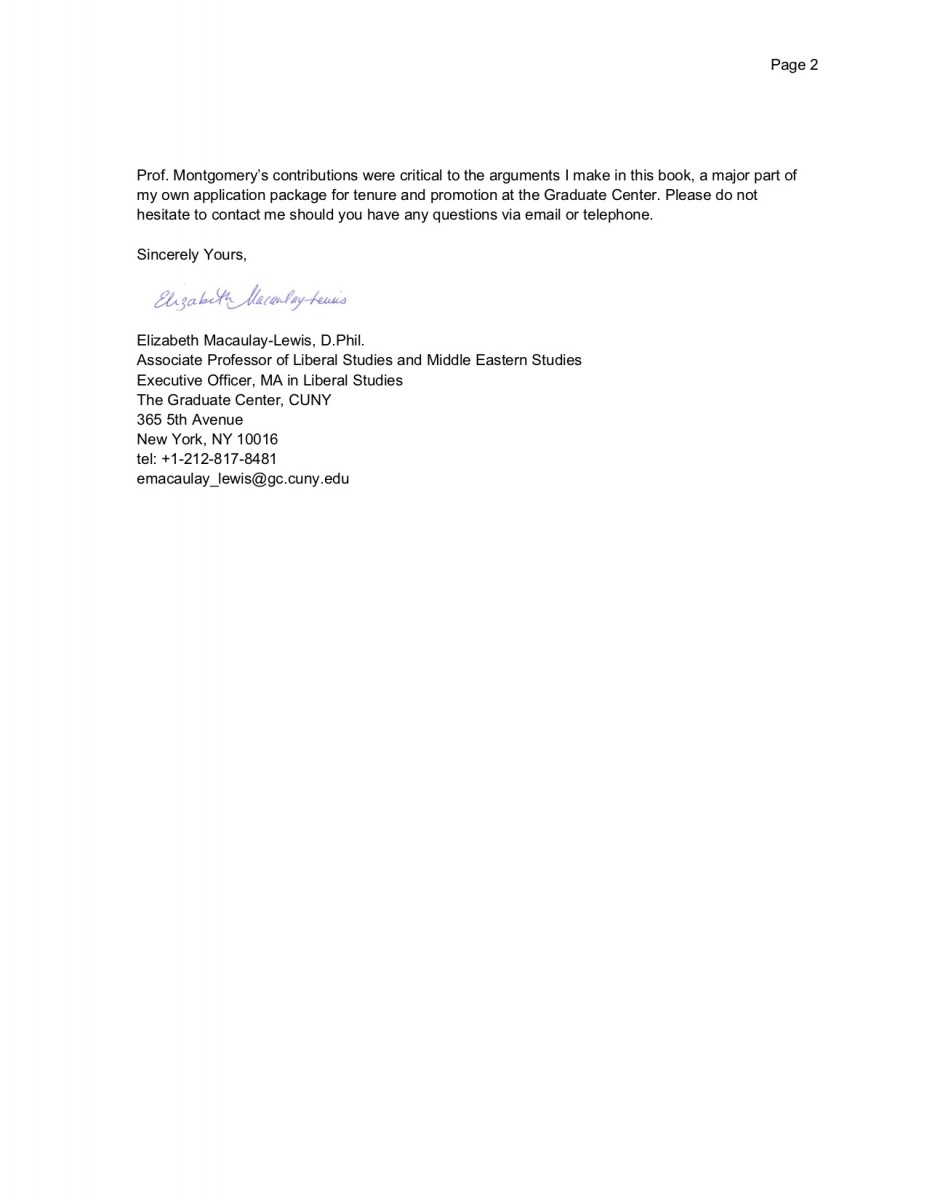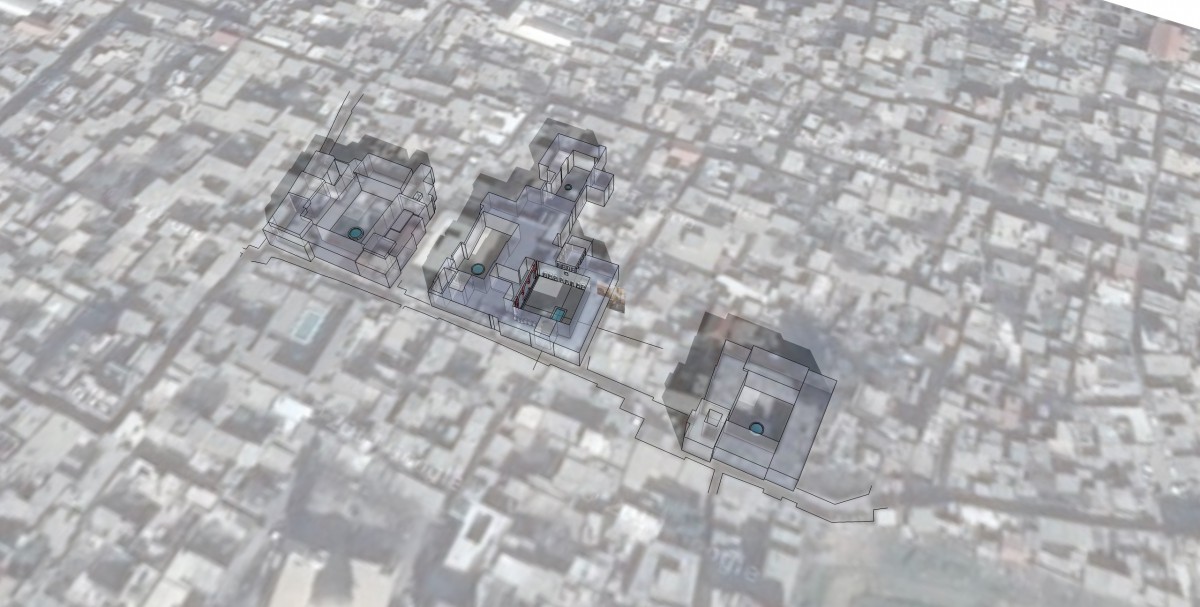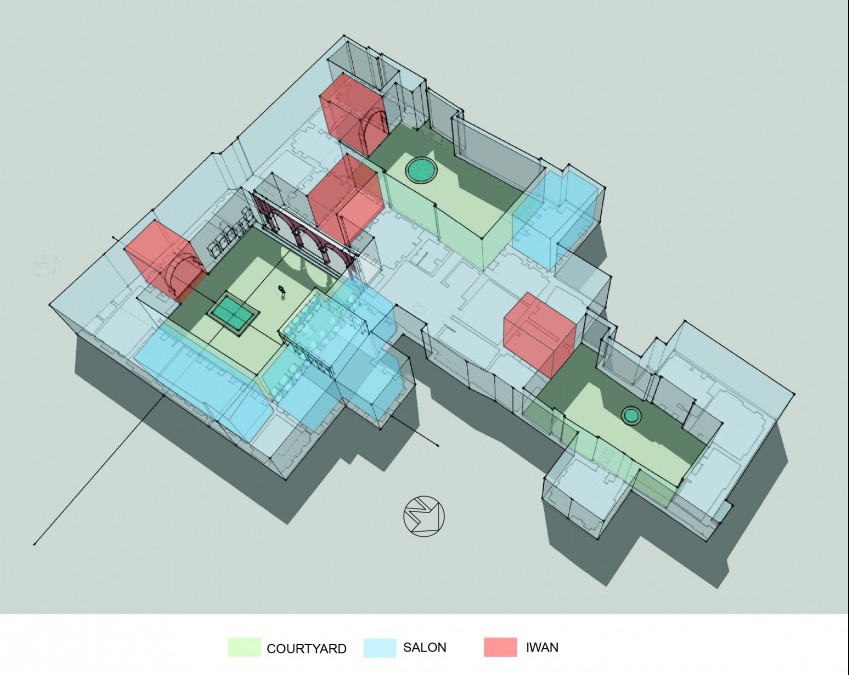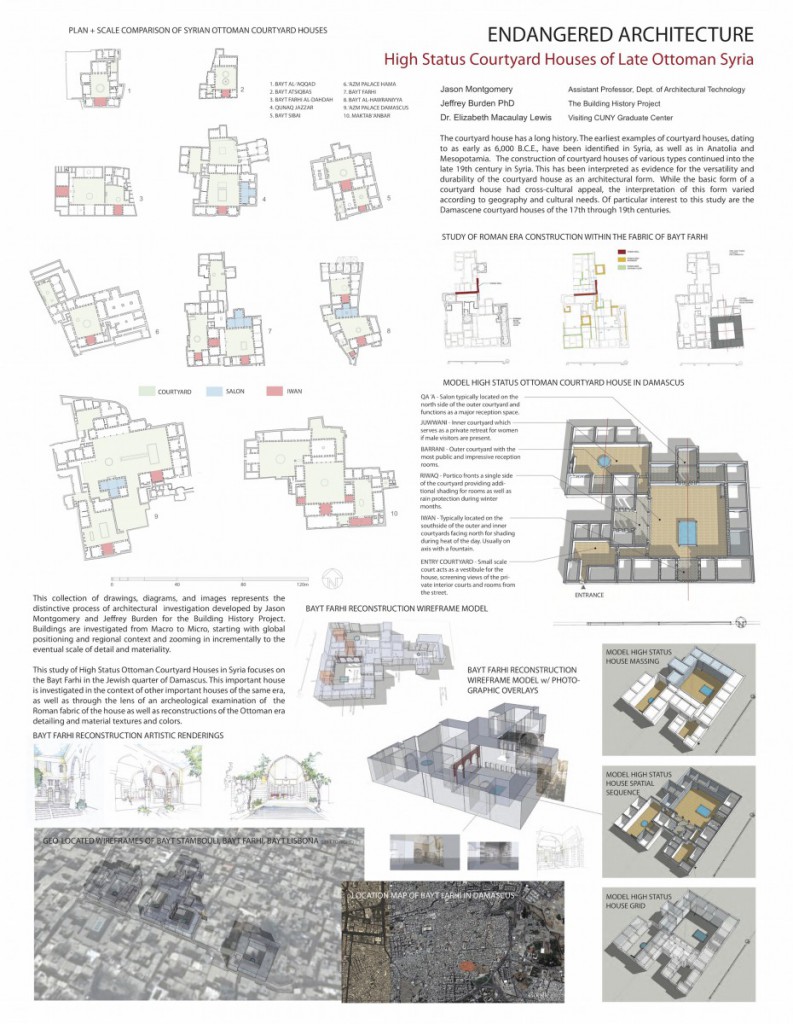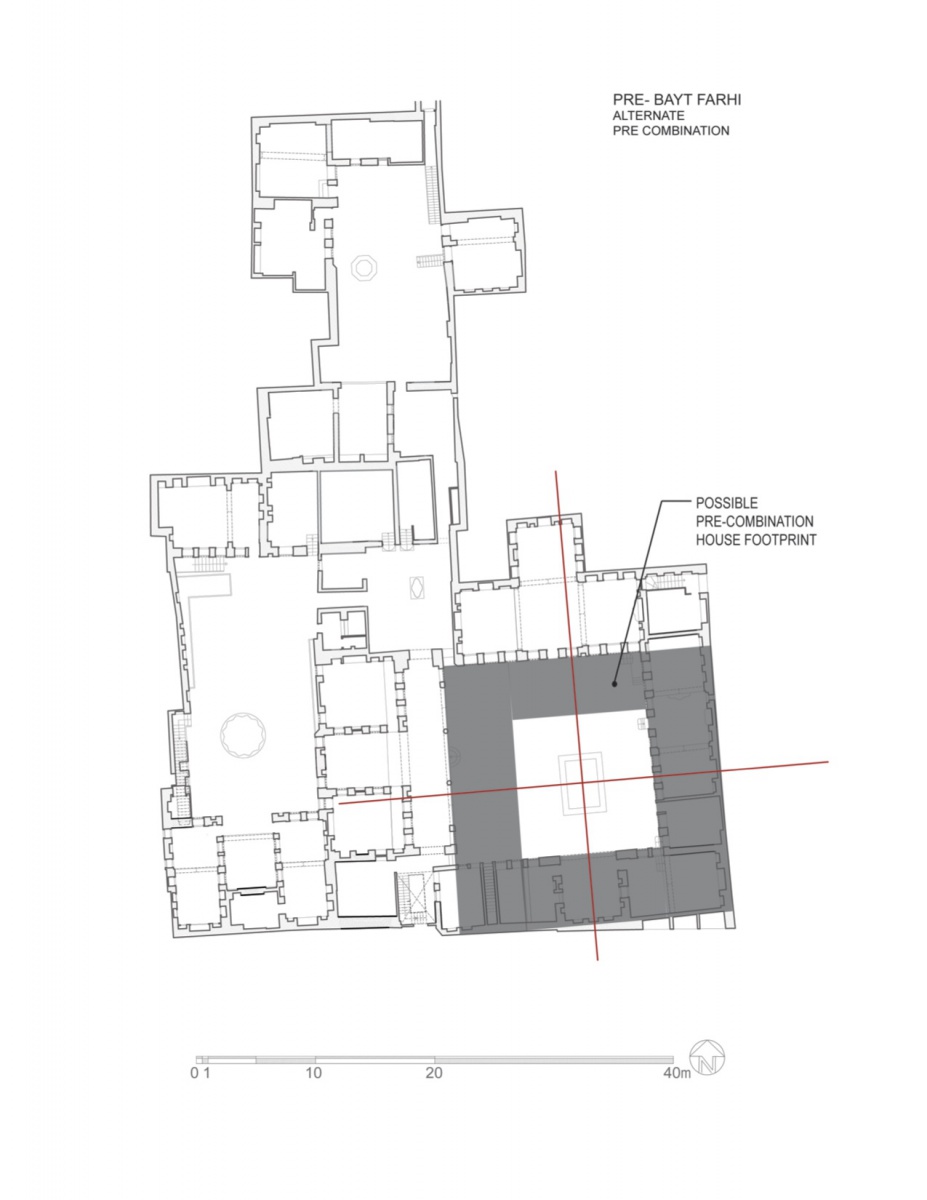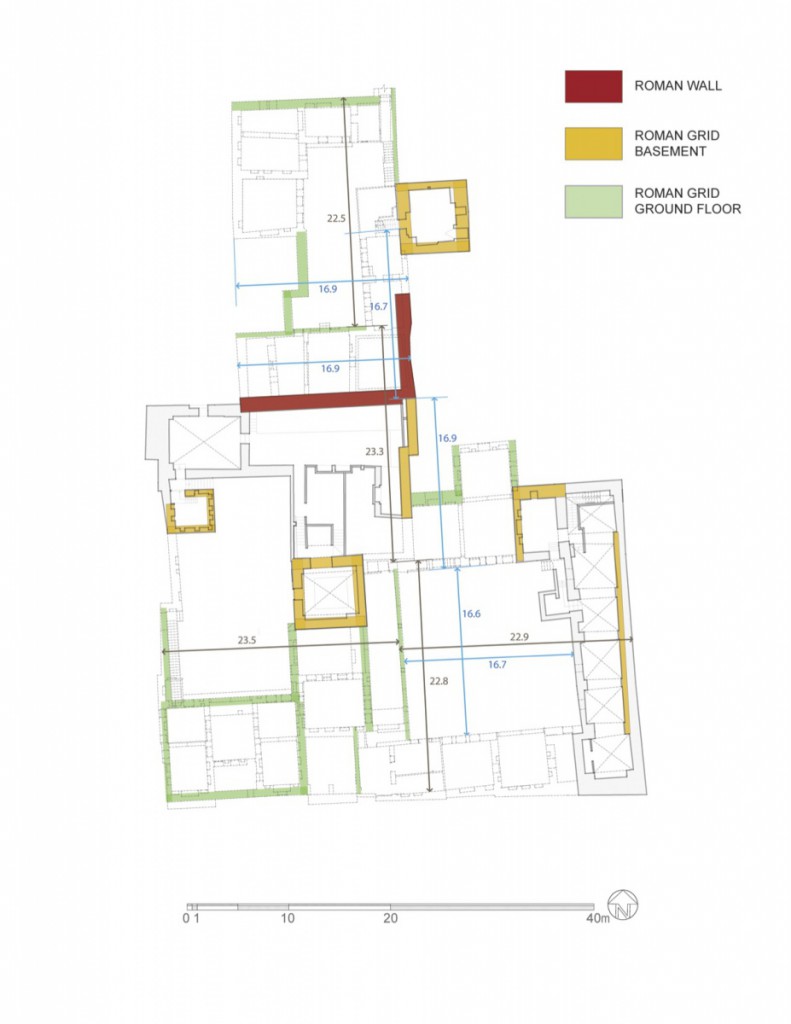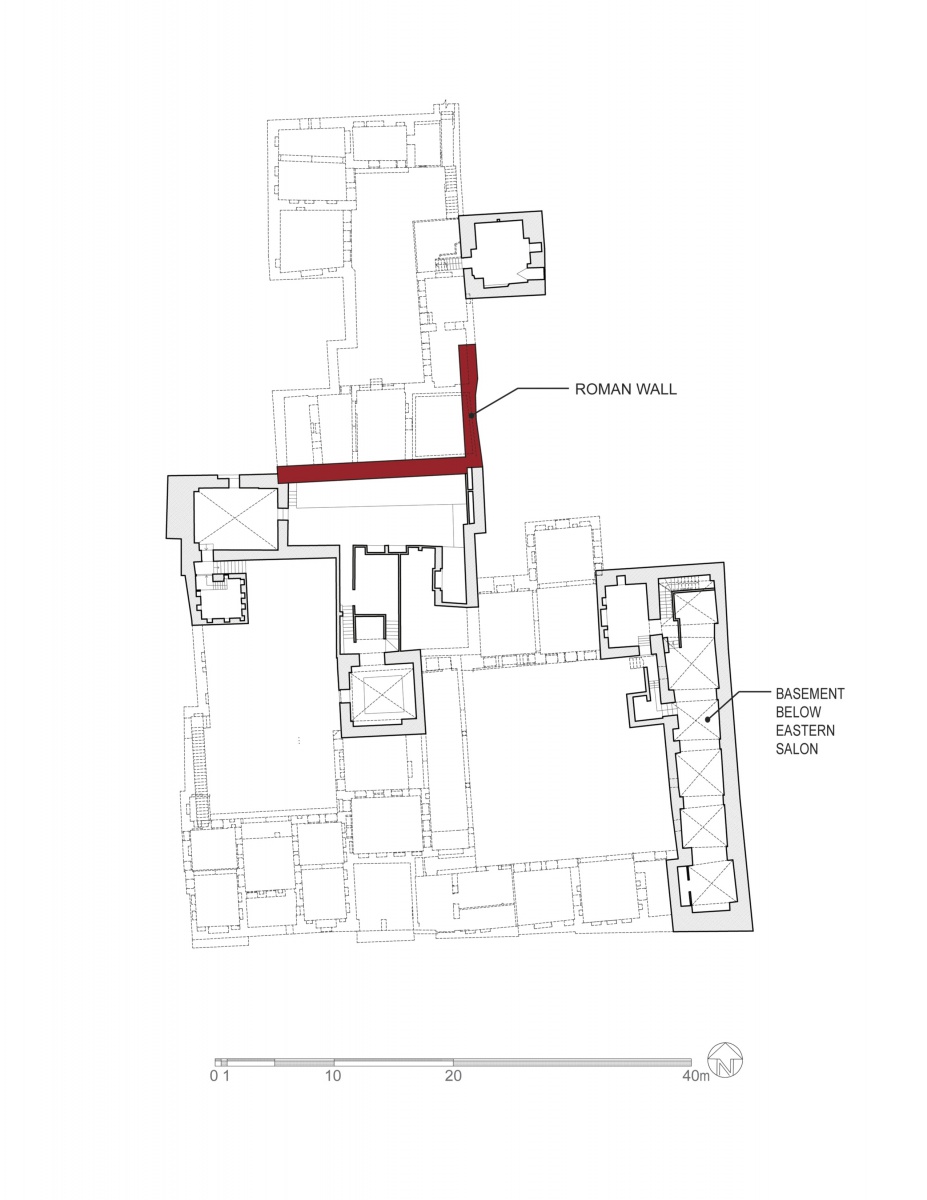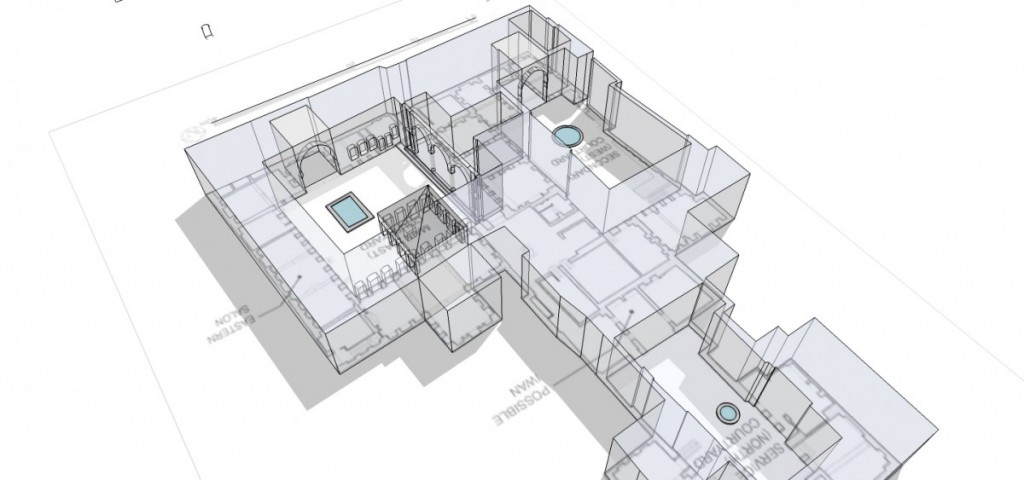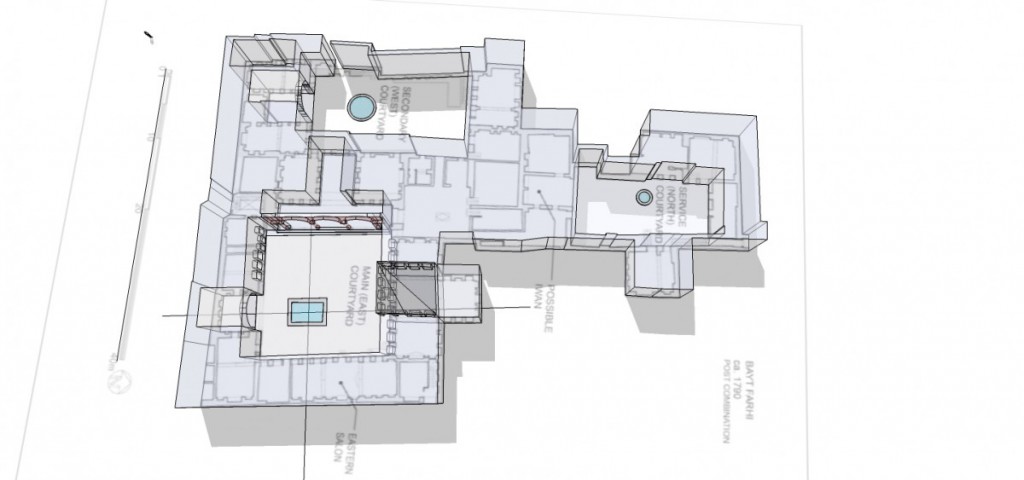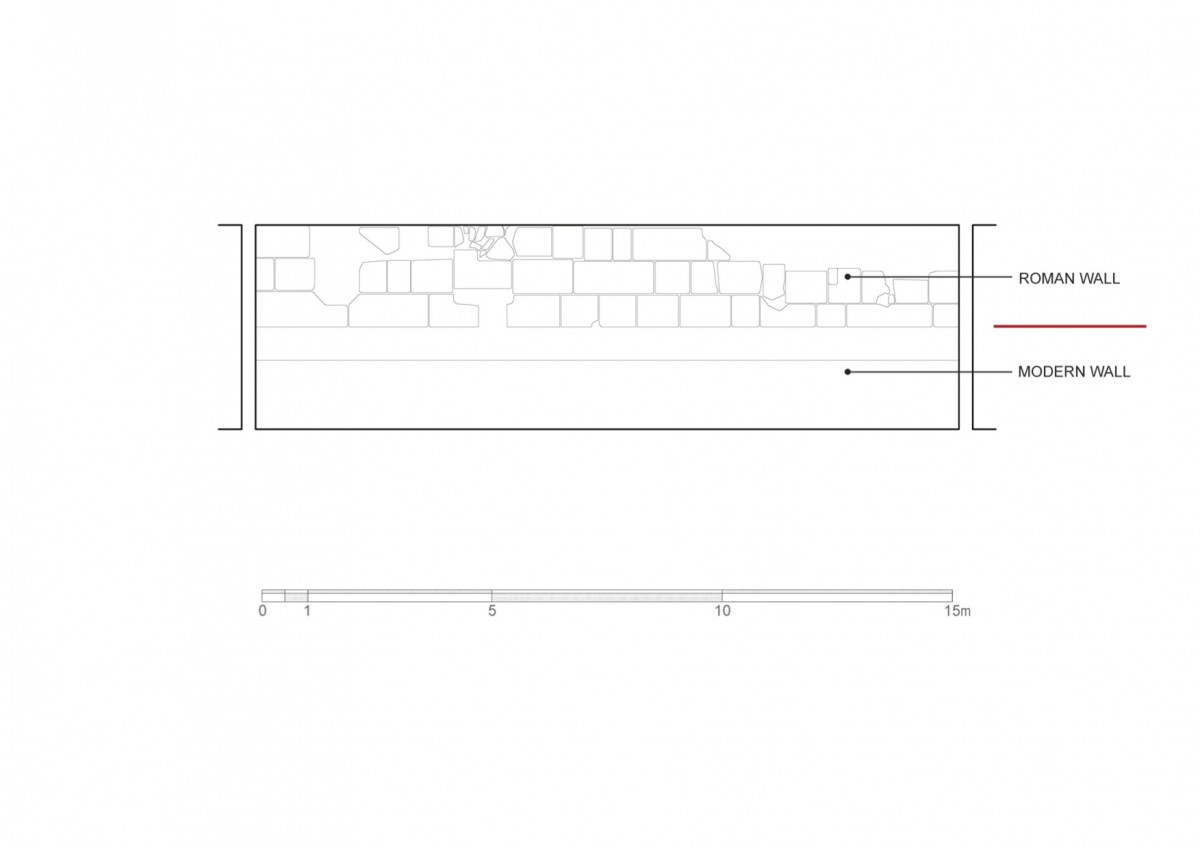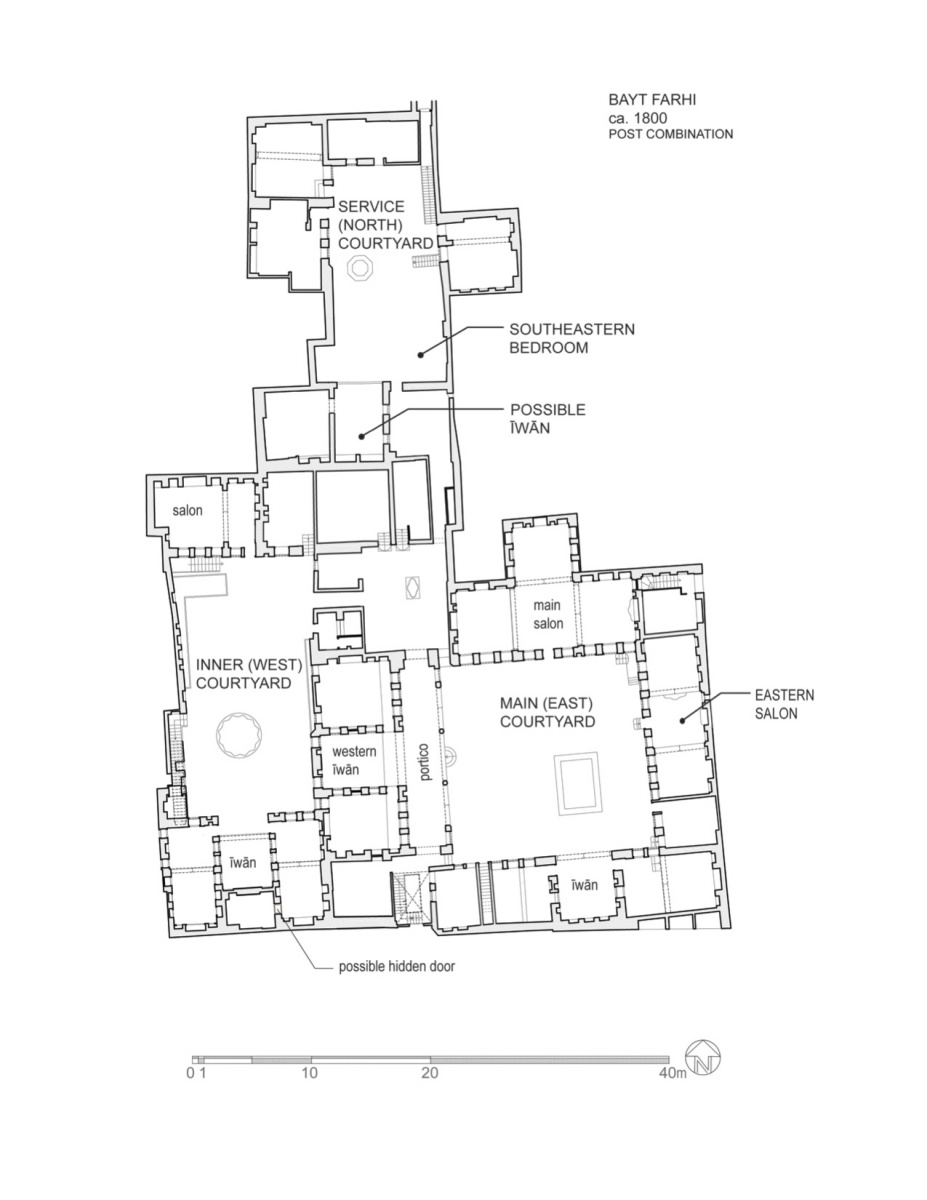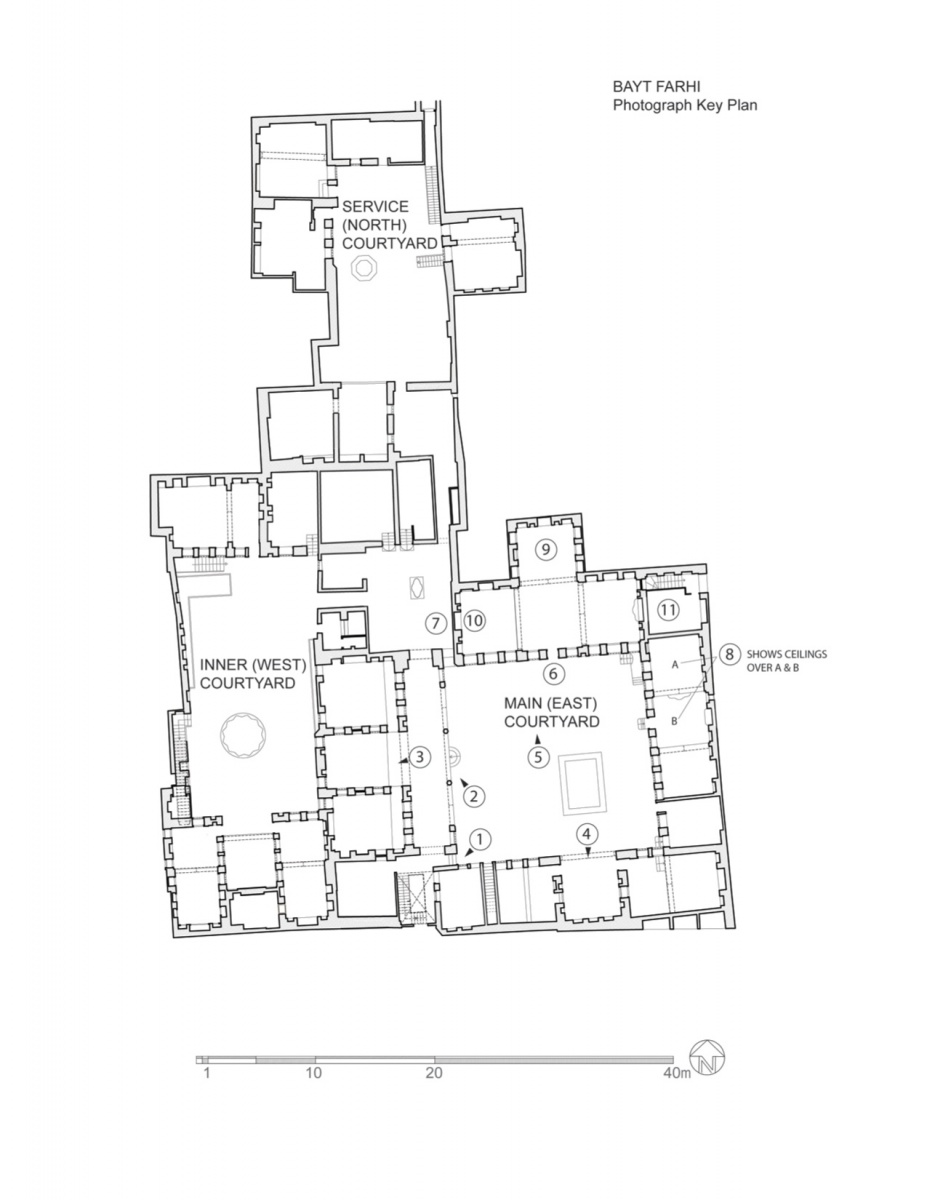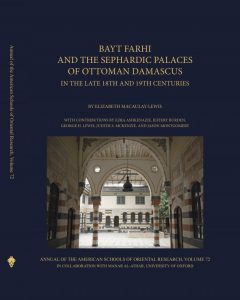 This monograph examines an important Ottoman Era palace in Damascus, Bayt Farhi. The palace is an important survivor of late 18th century courtyard house design for high-status families, in this case a prominent Sephardic Jewish family that saw success in administrative appointments and trade. The configuration of the palace around a series of courtyards with characteristic prominent interior and exterior rooms is a physical record of a way of life in the Ottoman Era that responds to cultural and environmental conditions.
This monograph examines an important Ottoman Era palace in Damascus, Bayt Farhi. The palace is an important survivor of late 18th century courtyard house design for high-status families, in this case a prominent Sephardic Jewish family that saw success in administrative appointments and trade. The configuration of the palace around a series of courtyards with characteristic prominent interior and exterior rooms is a physical record of a way of life in the Ottoman Era that responds to cultural and environmental conditions.
The decorative program endows the house with a sumptuous luxury while the structure regulates the sun to provide cooling in the summer and heat in the winter. The extensive inscriptions in Hebrew, Aramaic, and Arabic tell the story of this Jewish family living within the context of a Muslim Empire. The layers of the decorative program provide evidence of changing aesthetic taste in the 19th century in Damascus. The archeological layers within the limits of this palace built in this ancient city reveal the impact of earlier building fabric on the modern builders.
Jeffrey Burden and I were responsible for the architectural plans, sections, perspectives, and isometrics along with analytical diagram illustrate and supplement the text. Our drawings provide extensive context for the examination of Bayt Farhi, including scale comparison, urban juxtaposition and context, solar analysis, archeological layering, historic reconstruction, typological evolution, phases of construction, geometric analysis, spatial analysis, use patterns, as well as orientation and documentation of decorative components. Central to our work was the methodology of uniform articulation and documentation of all buildings examined and organizing them for publication at the same scale and solar orientation. This critical method provides a meaningful and rigorous platform for continued scholarly examination.
The overall contribution to this monograph is substantial, requiring 5 years of conception, development, refinement and editing, In total, 37 drawings were prepared for this volume. All the digital drawings within this total were my work, and I developed the preparation underlays for the historic reconstructions and artistic renderings that Jeffrey Burden executed.
This publication exhibits my expertise in examination and analysis of historic architecture and urban design as well as my skills and expertise in architectural documentation. My work is a critical component of this monograph and contributes substantially to its effectiveness as a scholarly work.
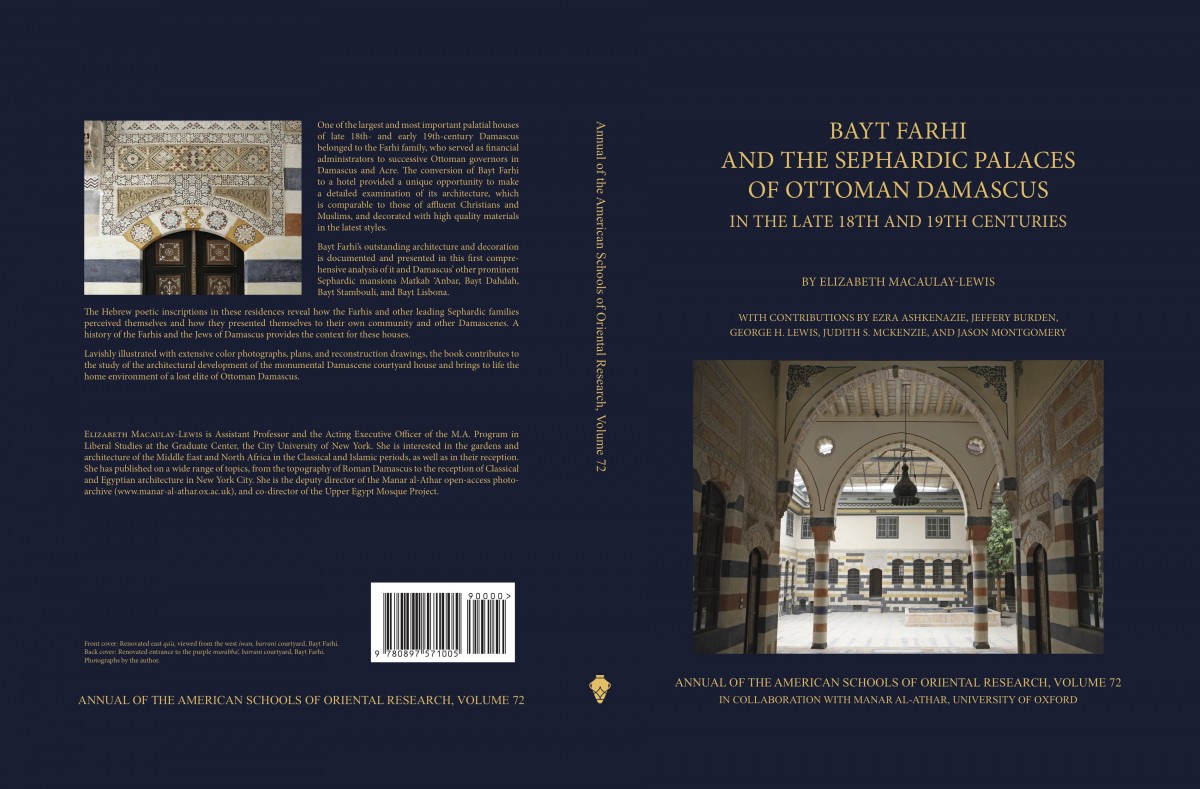
Link to Publisher: http://www.asor.org
REVIEW: “Damascus is a treasure trove of Ottoman domestic architecture. The old city preserves no greater example than the grand three-courtyard house of the prominent Jewish banker, Farhi al-Muallam. Elizabeth Macaulay-Lewis has done much more than accurately document and describe this marvel, recently restored to shine again in its original splendour. She provides us with a picture of the house in its context, even tracing back to the citys Roman phase. Her narrative explores how life for a Jewish family in late eighteenth century Damascus existed in an environment far removed from todays dysfunctional confessional divisions and where a Jewish family could grace the house with equally prominent references to its Jewish and Arab associations. The book is meticulously illustrated with plans and photographs bringing out every detail of the restoration process. It shows the house as it exists today, with its stunning palette of colours which previously only the English painter, Frederic Leighton, could adequately convey.” –Prof Ross Burns (Macquarie University, Sydney), author of Damascus A History, Monuments of Syria, Aleppo A History
DESCRIPTION: One of the largest and most important palatial houses of late 18th- and early 19th-century Damascus belonged to the Farhi family, who served as financial administrators to successive Ottoman governors in Damascus and Acre. The conversion of Bayt Farhi to a hotel provided a unique opportunity to make a detailed examination of its architecture, which is comparable to those of affluent Christians and Muslims, and decorated with high quality materials in the latest styles. Bayt Farhi’s outstanding architecture and decoration is documented and presented in this first comprehensive analysis of it and Damascus’s other prominent Sephardic mansions Matkab ‘Anbar, Bayt Dahdah, Bayt Stambouli, and Bayt Lisbona. The Hebrew poetic inscriptions in these residences reveal how the Farhis and other leading Sephardic families perceived themselves and how they presented themselves to their own community and other Damascenes. A history of the Farhis and the Jews of Damascus provides the context for these houses, along with the architectural development of the monumental Damascene courtyard house. Lavishly illustrated with extensive color photographs, plans, and reconstruction drawings the book brings to life the home environment of the lost elite Sephardic community of Ottoman Damascus. It will be an essential resource for those studying the architecture, history, and culture of Syria and the Ottoman Empire. Co-published with Manar al-Athar, University of Oxford.
Details:
- Series: Annual Of the American Schools Of Oriental Research (ASOR) (Book 4)
- Hardcover: 356 pages
- Publisher: American School of Oriental Research (May 10, 2018)
- Language: English
- ISBN-10: 0897571002
- ISBN-13: 978-0897571005
SAMPLE ARCHITECTURAL AND URBAN INVESTIGATIONS
Geo-located Wireframe Models (Bayt Stambouli, Bayt Farhi, Bayt Lisbona)
Diagram of Spatial Typologies, Orientations, and Combinations
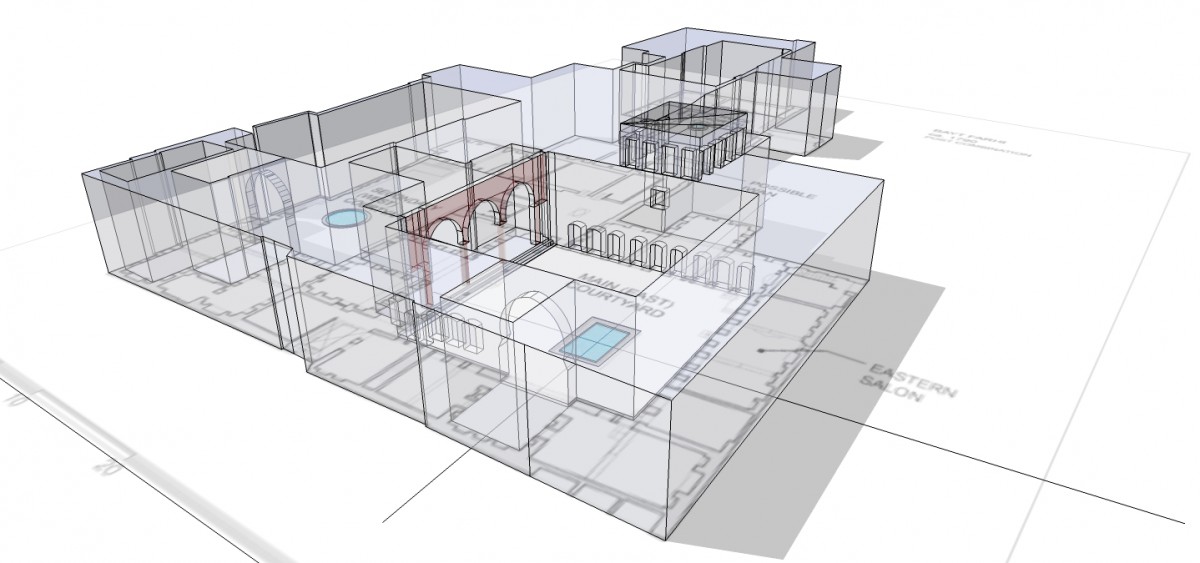 Bayt Farhi Massing Reconstruction
Bayt Farhi Massing Reconstruction
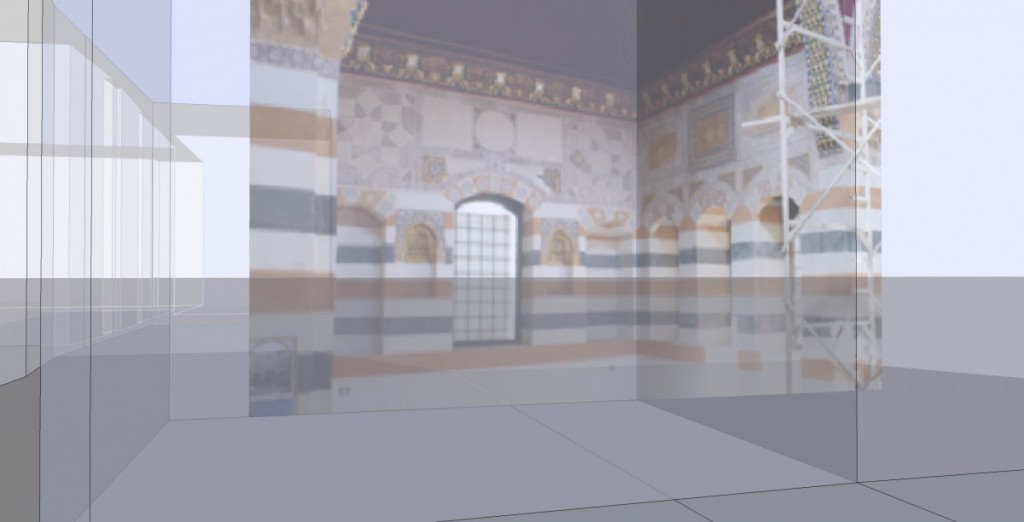 Bayt Farhi Reconstruction Wireframe with Overlayed Photo
Bayt Farhi Reconstruction Wireframe with Overlayed Photo
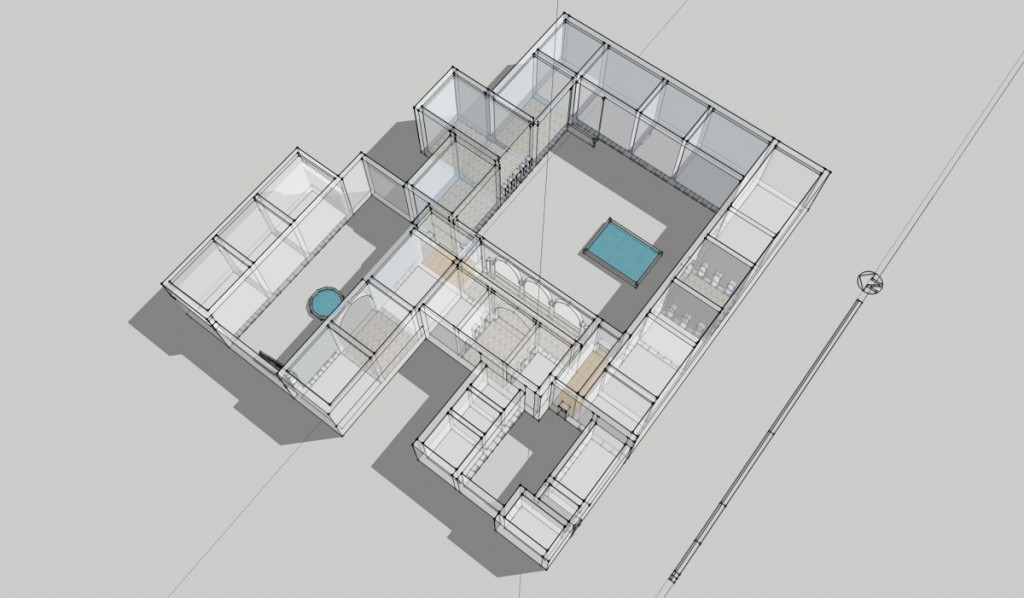
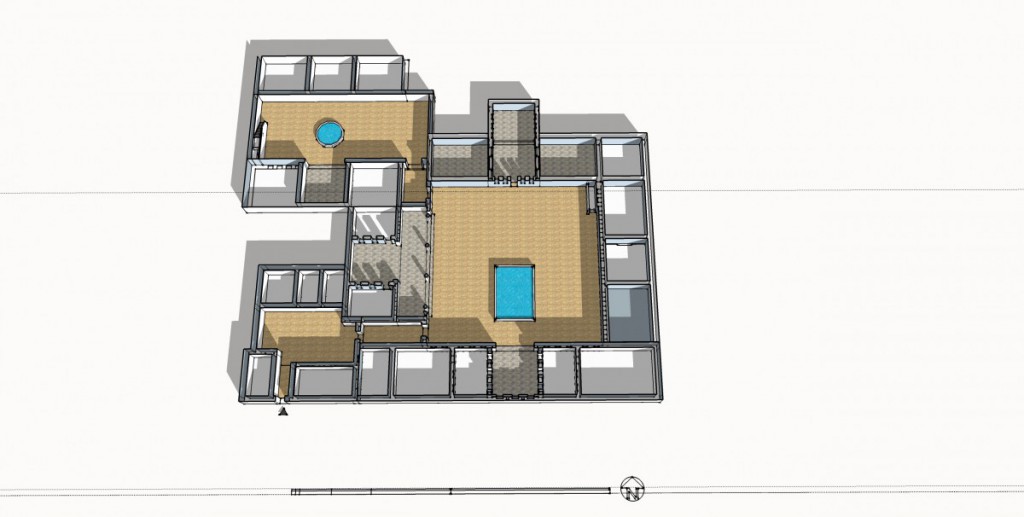 Model High-Status Ottoman Courtyard House in Syria
Model High-Status Ottoman Courtyard House in Syria
The Building History Project Lab
Jeffrey Burden, PhD and I have set up a service to assist scholars who are investigating topics that include the built environment. Dr. Burden and I apply our joint expertise in archeology, architectural history, and urban and building analysis to the scholar’s project to enrich both the analysis and the representation of the artifact.
In this pilot project, we are assisting Elizabeth Macaulay-Lewis, PhD with her investigation of Palaces of Late Ottoman Damascus, focusing on the palace of Bayt Farhi.
CITATION:
- E. Macaulay-Lewis, Bayt Farhi and the Forgotten Sephardic Palaces of Late Ottoman Damascus, Manar al-Athar Monograph Series, no. 3, University of Oxford, 2018.
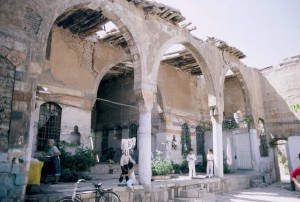
Recent Project Email Correspondance 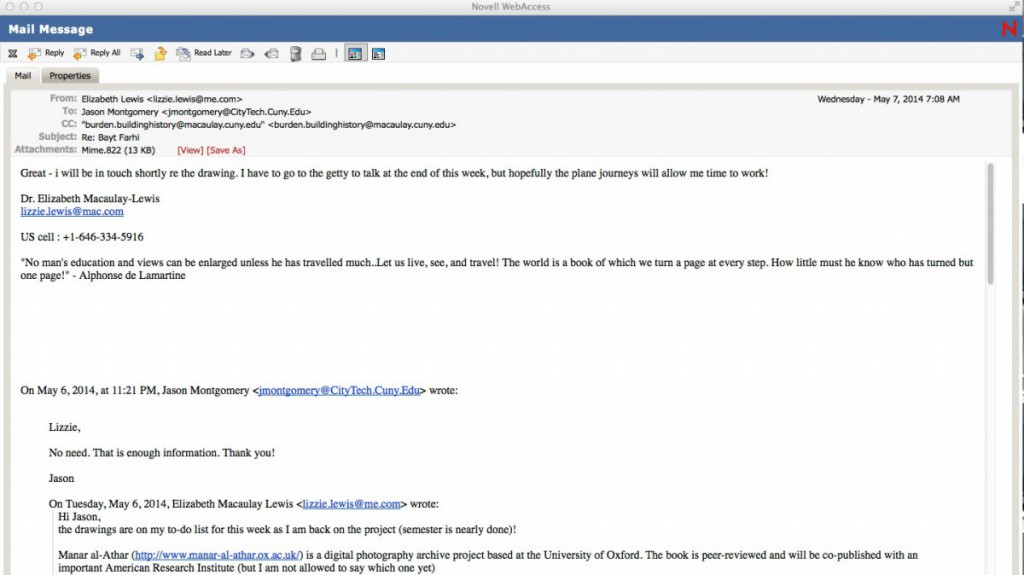
Poster for Faculty Research Poster Session Nov 2014:
